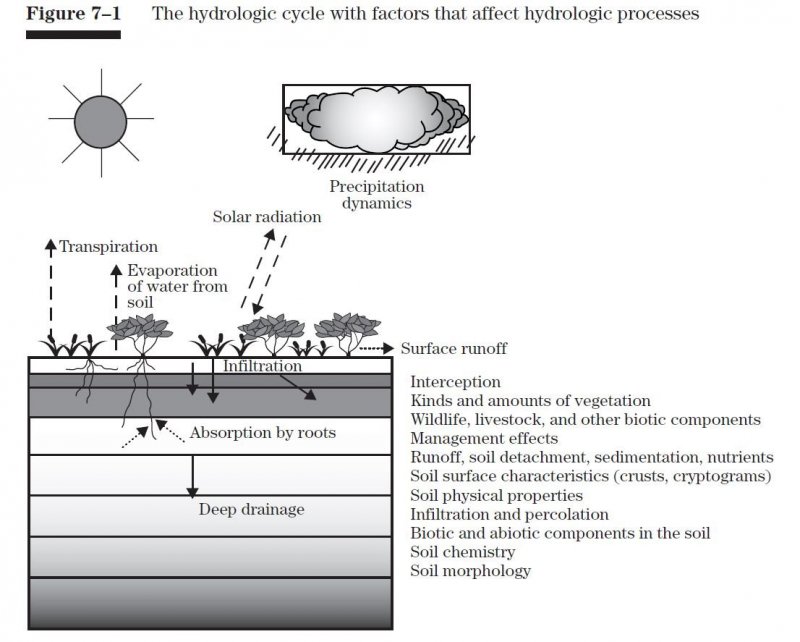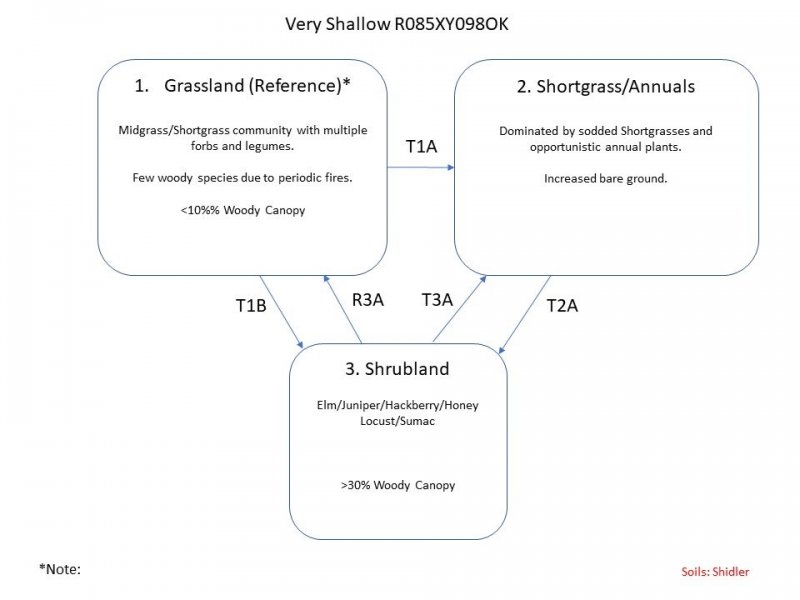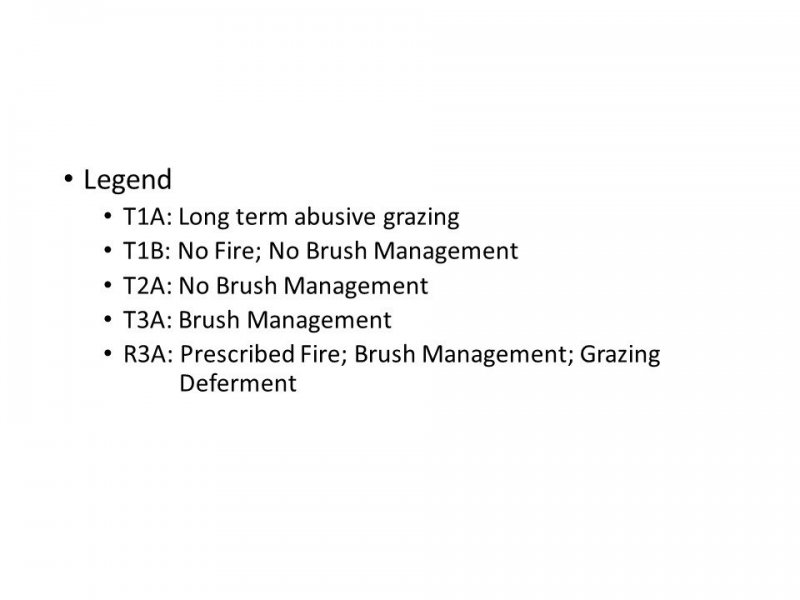Ecological dynamics
Like many sites across the Great Plains, changes in disturbance initiated by permanent settlements has had a profound impact on the ecological dynamics of these sites. Historically, the site was influenced by periodic fires during all seasons of growth. These fires were often the result of dry lightning strikes and/or anthropogenic fires set by Native Americans. The fire frequency during the period prior to settlement is estimated between 2-5 years for the southern Great Plains. These frequent fires were often followed by grazing of migratory bison herds attracted to the new growth of grass. This led to a shifting mosaic between burned/grazed and unburned and ungrazed landscapes.
With the removal of fire and the introduction of conventional livestock fencing, the landscape began to change to more homogenous vegetation patterns and altered plant communities. This led to a highly fragmented, highly disturbed landscape we see today across much of the area.
Less fire tolerant woody species are more prevalent in many areas due to fire suppression and/or the use of strictly dormant season fires. Abusive grazing can shift the plant community to less palatable grass species and lead to an increase in opportunistic forbs. Heavy grazing can also reduce fine fuel load and limit the ability to conduct a prescribed fire.
State and Transitional Pathways:
The following diagram suggests some pathways that vegetation on the site might take in response to various treatments or natural stimuli over time. There may be other states that are not shown on this diagram. This information identifies the changes in plant communities that do occur due to management practices and natural factors. The plant communities described here are commonly observed on this ecological site. The local NRCS field office has information available to assist with planning and development of the plant community for specific purposes.
Changes in plant community makeup may be due to many factors. Change may occur slowly or in some cases, fairly rapidly. As vegetative changes occur, certain thresholds are crossed. A threshold means that once a certain point is reached during the transition of one community to another, a return to the previous state may not be possible without the input of some form of energy. This often means intervention with practices that are not part of natural processes. An example might be the application of herbicide to control some woody species to reduce their population and encourage more grass and forbs growth. Merely adjusting grazing practices would probably not accomplish any significant change in a plant community once certain thresholds are crossed. The amount of energy required to effect change in community would depend on the present vegetative state and the desired change.
State 1
Grassland - Reference
This is the reference state for the Very Shallow Upland ecological site. It represents the historic range of variability in the plant communities with the periodic disturbance of fire and grazing. It is dominated by herbaceous plants with few woody species.
The dominant grasses are sideoats grama, big bluestem, Indiangrass, switchgrass and little bluestem. Other grasses include Texas cupgrass, dropseeds, silver bluestem, hairy grama, blue grama and Scribner’s panicum. Dominant forbs include, western ragweed, heath aster, poppymallows and trailing ratany. Legumes include wild indigo, prairie clovers, scurfpea, and native lespedezas. Few woody species persist in reference condition but may include sumacs, sand plum, coralberry, persimmon and skunkbush. The Very Shallow site is estimated to produce between 500 – 2000 pounds of vegetative production per year in reference condition.
Midgrasses Shortgrass Forbs
Shrubs and Trees are a minor component of these sites.
State 2
Shortgrass
This state represents a change in the dominant plant community. Shortgrasses such as buffalograss, blue grama and hairy gramma have formed a sod-like plant community. There are many areas of bare ground and opportunistic annuals such as annual threewn and common broomweed are abundant. Precipitation runoff is high and infiltration is low which leads to low soil moisture and reduced production.
State 3
Shrubland
This state describes the invaded, woody dominated plant community of the Very Shallow site. The ecological processes are dominated by woody species including mesquite, honey locust, elm, and juniper species. Some herbaceous plants persist under the woody canopy or in interspaces. Usually, shade tolerant species like Texas wintergrass are prominent herbaceous components in this community. There may also be an increase in prickly pear in this state.
Transition T1A
State 1 to 2
With years of abusive grazing, more palatable grasses and forbs will decline and lead to a shift towards a sodded shortgrass and annual dominated state.
Transition T1B
State 1 to 3
These sites are prone to invasion by juniper. Without brush management, brush invasion may increase to the point where the site transitions to the Shrubland state. At this point it will take significant inputs to remove woody species and restore the grass dominated community.
Transition T2A
State 2 to 3
These sites are prone to invasion by juniper. Without brush management, brush invasion may increase to the point where the site transitions to the Shrubland state. At this point it will take significant inputs to remove woody species and restore the grass dominated community.
Restoration pathway R3A
State 3 to 1
At this point it will take significant inputs to remove woody species and restore the grass dominated pasture. However, it may be achieved through brush management and a prescribed grazing plan which allows ample rest for the re-establishment of grasses.
Transition T3A
State 3 to 2
At this point it will take significant inputs to remove woody species and restore the grass dominated pasture. However, it may be achieved through brush management and a prescribed grazing plan which allows ample rest for the re-establishment of grasses.



